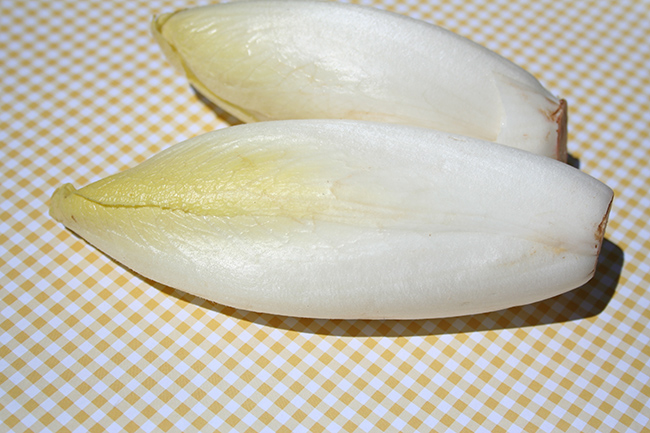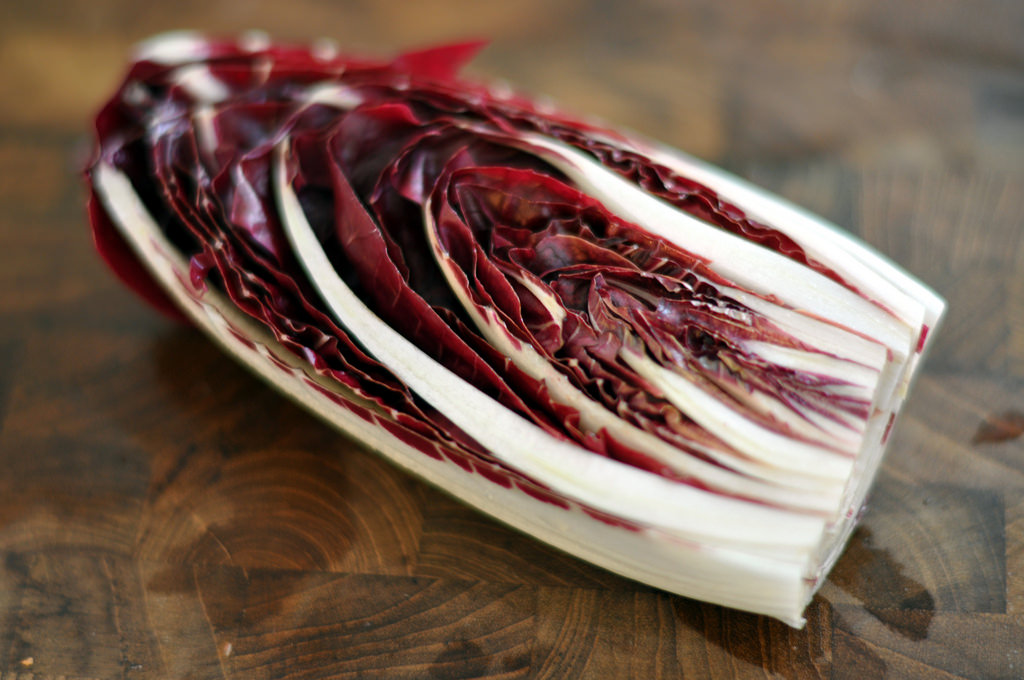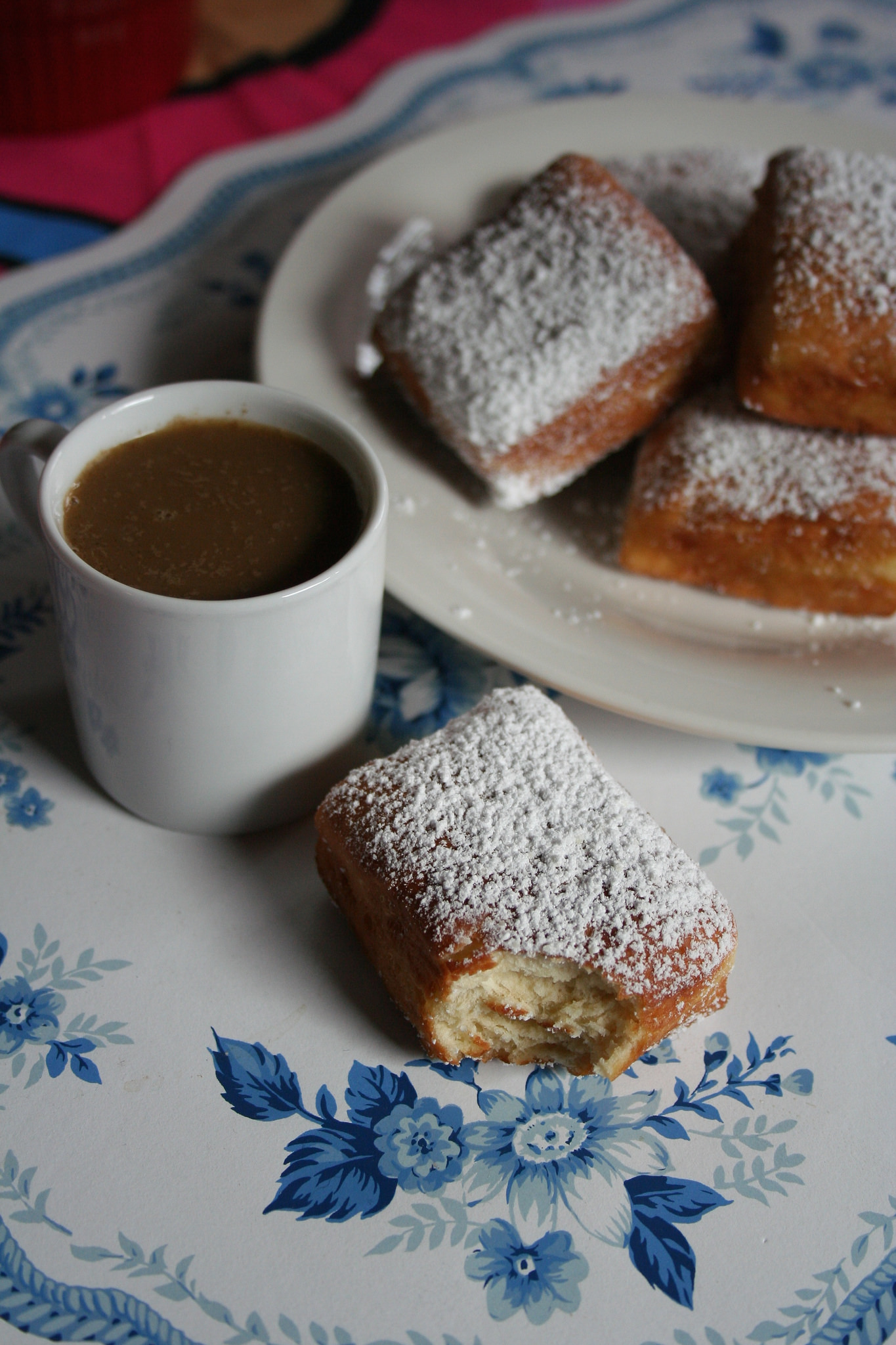When you hear the word “chicory,” chances are that your first culinary association is coffee. While chicory-laced coffee can be delicious (particularly when served with beignets!), it’s far from the only way to enjoy chicory.

First, what is chicory?
Chicory actually includes a pretty broad collection of edible leaves, buds and roots.

Photo licensed via Creative Commons by Flickr member Panegyrics of Granovetter
Chicory is a herbaceous plant that’s part of the dandelion family. Chicory has bright blue (occasionally white or pink) flowers. Many types of chicory, and many parts of the plant, are cultivated for culinary use.
Edible chicory
Yes, it’s a flower, but you absolutely can consume chicory. Actually, the leaves, buds and roots are all used in culinary arena. These are the most common types of chicory you’ll encounter in the kitchen:

1. Belgian endive
Pronounced “on-deev,” this elongated bud is characterized by creamy-colored, tightly packed leaves. Belgian endives are grown in darkness, which keeps their color so light. They have a slightly bitter flavor. You can consume them raw or cooked.

2. Curly endive (aka frisée)
Pronounced “N-dive,” curly endive or frisée is more like a lettuce in its shape. Depending on where you encounter it, you may see it referred to as “curly chicory” or simply “chicory.” It has a slightly bitter flavor, and you can consume curly endive raw or cooked.

Photo licensed via Creative Commons by Flickr member cyclonebill
3. Radicchio
Pronounced “rahd-ick-ee-oh,” it’s also occasionally referred to as “red chicory” or “red endive.” This striking vegetable usually features variegated reddish-purple leaves. It has a bitter and somewhat spicy flavor, and you can eat it raw or cooked.

Photo licensed via Wikimedia Commons
4. Chicory root
If you’re thinking of the stuff used to flavor coffee, this is what you’re thinking of. The chicory root can be baked, roasted, ground and used as an additive or flavoring.
When is chicory in season?
Chicory’s prime season begins in early fall. That means that right now is prime time to enjoy chicory in its many edible forms!
Storing chicories
When talking about buds or leaves, store chicories loosely wrapped in a damp towel, in a slightly breathable plastic bag, in the refrigerator.
Chicory root is most often sold as granules, and should be stored in a cool, dry place in a sealed container.
5 ways to cook chicory

1. Grilled
Grilling chicories can help soften the flavor and bring out a little bit of their natural sweetness to balance out the bitter. Grilled Belgian endive is an incredible and elegant appetizer or side; radicchio is also sturdy enough to stand up to some grilling, and makes a great side dish or addition to a salad.
2. Pan-fried
Pan-fried chicories can make an excellent addition to your meal. One of my favorite modes of preparation is to cook a few slices of bacon in a skillet, and reserve a tablespoon or so of the fat to quickly sauté some curly endive, just until softened and slightly wilted. Cut the bacon and serve with the cooked curly endive for a truly memorable side salad!

3. Salads
Belgian endive and other leafy chicories tend to have a bitter flavor. Some people love the astringency of the bitter vegetables; for others, it’s a bit much. A good middle ground is incorporating a mix of chicory along with a sweeter lettuce in a salad — enough to give a little “zip” but not so much to overpower.
4. Soups
Since chicory’s astringent flavor becomes more mellow when cooked, it’s an ideal ingredient to include in soups, which will soften its flavor. This recipe features the rich, creamy flavor of white beans, which are contrasted with chicory. A generous sprinkling of Parmesan on top makes it the perfect healthy yet hearty meal!

5. Chicory coffee
Chicory root is most famously used as either a coffee substitute or a coffee additive. To make chicory coffee, you can simply substitute part ground chicory for the coffee in your coffee maker. I’ve done it in a drip coffee maker and a French press coffee maker; both worked fine.
The ratio is up to you, but for newbies, a 1:4 ratio (1 part chicory, 4 parts coffee) is a good starting point. Adjust based on your preference. Some people prefer using chicory instead of coffee, or using a more chicory-heavy blend.

Share tips, start a discussion or ask one of our experts or other students a question.
No Responses to “The Delicious World of Chicory (& How to Cook It)”